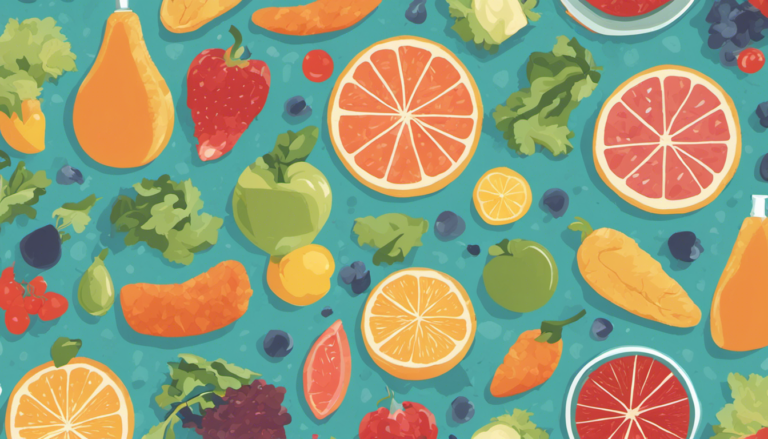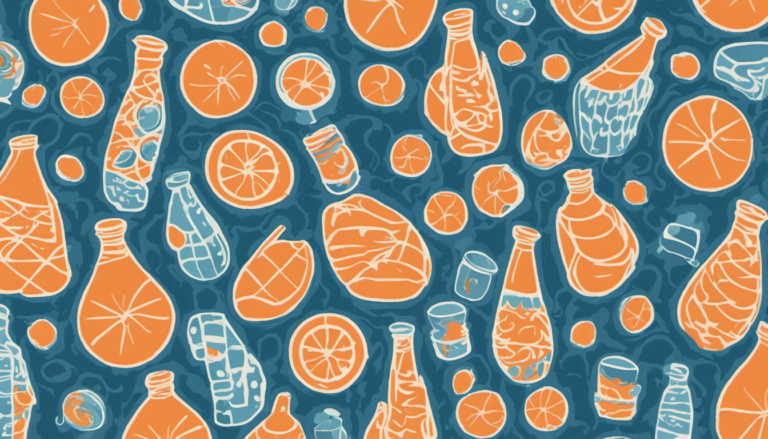Top Foods to Include in Your Weight Loss Journey
I. Introduction
Embarking on a weight loss journey is a significant step towards a healthier lifestyle. The importance of diet in weight loss cannot be overstated. It’s not just about eating less, but eating right. The role of specific foods in weight loss is crucial, as they can help boost metabolism, reduce appetite, and enhance fat burning.
Understanding the nutritional value of different foods and how they affect our bodies is key to achieving weight loss goals. Certain foods can help you shed those extra pounds by keeping you full for longer, boosting your metabolism, and providing essential nutrients without adding excessive calories.
Let’s delve into the world of weight loss and explore the role of diet, portion control, and specific foods that can aid in your journey. Remember, weight loss is not just about looking good, but feeling good too. Here are some dietary plans and recipes that can help you get started.
II. Understanding Weight Loss
Weight loss occurs when you burn more calories than you consume. This can be achieved through a combination of diet and exercise. A balanced diet is essential in weight loss as it provides the necessary nutrients your body needs to function properly while still allowing you to lose weight.
It’s important to understand that weight loss is not just about cutting calories, but about making healthier food choices. Consuming a variety of foods from all food groups in the right proportions can help ensure your body gets all the necessary nutrients it needs to function optimally. Here is a comparison of exercise and diet in weight loss.
Remember, weight loss is a gradual process and it’s important to set realistic goals. It’s not about quick fixes but long-term changes in your eating habits and lifestyle. Check out these motivational tips to keep you on track.
III. Importance of Portion Control
Portion control is a crucial aspect of a successful weight loss plan. It’s not just about what you eat, but how much you eat. By controlling the size of your portions, you can regulate your calorie intake without having to eliminate certain foods from your diet.
Portion control can help you lose weight as it allows you to eat a balanced diet while still enjoying your favorite foods. It’s about understanding how much a serving size is and how many calories it contains. Here are some meal prepping tips to help you with portion control.
Remember, portion control doesn’t mean you have to eat tiny portions of everything. It’s about balancing out your meals and ensuring you’re getting the right amount of nutrients. For example, you can have larger portions of low-calorie, nutrient-dense foods like fruits and vegetables, and smaller portions of high-calorie foods.
IV. Fruits for Weight Loss
Fruits are a great addition to any weight loss diet. They are low in calories, high in fiber, and packed with essential vitamins and minerals. The fiber in fruits can help you feel full for longer, reducing the likelihood of overeating.
Some fruits that are beneficial for weight loss include apples, berries, and grapefruit. Apples are high in fiber and water, which can help you feel full. Berries are packed with antioxidants, which can help boost your metabolism. Grapefruit is low in calories and high in water, making it a great choice for weight loss.
Remember, while fruits are healthy, they still contain sugar. It’s important to consume them in moderation as part of a balanced diet. Check out these healthy breakfast ideas that include fruits.
V. Vegetables for Weight Loss
Vegetables are a crucial part of a weight loss diet. They are low in calories and high in fiber, making them perfect for weight loss. They are also packed with essential vitamins and minerals that your body needs to function properly.
Some vegetables that are beneficial for weight loss include leafy greens, bell peppers, and broccoli. Leafy greens are low in calories and high in fiber, making them a great choice for weight loss. Bell peppers are packed with vitamin C, which can help boost your metabolism. Broccoli is high in fiber and antioxidants, making it a great choice for a weight loss diet.
Remember, while vegetables are healthy, it’s important to consume a variety of them to ensure you’re getting a wide range of nutrients. Here are some benefits of a plant-based diet.
VI. Lean Proteins for Weight Loss
Protein plays a crucial role in weight loss. It can help you feel full, reduce your appetite, and boost your metabolism. Lean proteins are a great choice for weight loss as they are lower in fat and calories.
Some examples of lean proteins beneficial for weight loss include chicken breast, turkey, fish, and tofu. Chicken breast is a great source of lean protein and can help you feel full. Turkey is also a good source of protein and is low in fat. Fish is rich in omega-3 fatty acids, which can help boost your metabolism. Tofu is a great source of protein for vegetarians and vegans.
Remember, while protein is important for weight loss, it’s still important to consume it in moderation. Too much protein can lead to kidney problems and other health issues. Check out these protein sources for more information.
VII. Whole Grains for Weight Loss
Whole grains are a great addition to a weight loss diet. They are high in fiber, which can help you feel full and reduce your appetite. They are also packed with essential nutrients like B vitamins, iron, and magnesium.
Some examples of whole grains beneficial for weight loss include brown rice, oatmeal, and quinoa. Brown rice is a whole grain that is high in fiber and can help you feel full. Oatmeal is also high in fiber and can help reduce your appetite. Quinoa is a complete protein and is packed with essential nutrients.
Remember, while whole grains are healthy, they are still high in calories. It’s important to consume them in moderation as part of a balanced diet. Here are some benefits of whole grains.
VIII. Healthy Fats for Weight Loss
Fats often get a bad rap when it comes to weight loss, but not all fats are created equal. Healthy fats can actually help you lose weight by keeping you full and satisfied. They also provide essential nutrients that your body needs to function properly.
Some examples of healthy fats beneficial for weight loss include avocados, nuts, and olive oil. Avocados are packed with monounsaturated fats, which can help reduce belly fat. Nuts are a great source of healthy fats and fiber, which can help you feel full. Olive oil is high in monounsaturated fats, which can help boost your metabolism.
Remember, while healthy fats are beneficial for weight loss, they are still high in calories. It’s important to consume them in moderation as part of a balanced diet. Here’s a detailed explanation of different types of fats.
IX. Dairy Products for Weight Loss
Dairy products can be a great addition to a weight loss diet. They are high in protein, which can help you feel full and reduce your appetite. They also provide essential nutrients like calcium and vitamin D.
Some examples of dairy products beneficial for weight loss include Greek yogurt, cottage cheese, and skim milk. Greek yogurt is high in protein and low in fat, making it a great choice for weight loss. Cottage cheese is also high in protein and can help you feel full. Skim milk is low in fat and high in protein and calcium.
Remember, while dairy products are beneficial for weight loss, it’s important to choose low-fat or non-fat options. Full-fat dairy products are high in calories and saturated fat. If you’re lactose intolerant or vegan, there are plenty of dairy alternatives available. Here are some benefits of a dairy-free diet.
X. Importance of Hydration in Weight Loss
Staying hydrated is crucial for weight loss. Water can help you feel full, boost your metabolism, and aid in digestion. It also helps flush out toxins from your body.
Drinking water before meals can help reduce your appetite and prevent overeating. It’s also a good idea to replace sugary drinks with water to reduce your calorie intake. Here are some benefits of hydration.
Remember, while water is the best choice for hydration, you can also drink other beverages like green tea and herbal tea. Just be sure to avoid sugary drinks as they can add extra calories to your diet.
XI. Foods to Avoid During Weight Loss
While it’s important to focus on what to eat, it’s also crucial to know what foods to avoid during weight loss. Foods that are high in sugar, saturated fats, and calories can hinder your weight loss efforts.
Some examples of foods to avoid include sugary drinks, fast food, and processed foods. Sugary drinks are high in calories and can lead to weight gain. Fast food is often high in saturated fats and calories. Processed foods are often high in sugar, unhealthy fats, and calories.
Remember, it’s not about completely eliminating these foods from your diet, but about making healthier choices. Here’s a detailed explanation of sugar substitutes you can use instead.
XII. Importance of Regular Exercise
Regular exercise is a crucial part of any weight loss plan. It not only helps burn calories but also improves your overall health and well-being. Exercise can also help boost your metabolism, making it easier for you to lose weight.
It’s important to find an exercise routine that you enjoy and can stick to. This could be anything from walking and jogging to yoga and weightlifting. Here are some tips for effective exercise.
Remember, it’s not just about the quantity of exercise, but also the quality. Make sure to include both cardio and strength training in your routine for the best results.
XIII. Conclusion
Weight loss is a journey that requires dedication, patience, and effort. Including the right foods in your diet, practicing portion control, staying hydrated, and exercising regularly are all crucial steps towards achieving your weight loss goals.
Remember, it’s not just about losing weight, but about adopting a healthier lifestyle. So, don’t be too hard on yourself. Celebrate your small victories and keep pushing forward. You’ve got this!
For more tips and resources on weight loss, check out our lifestyle and environment section.
XIV. References
1. “Dietary Guidelines for Americans.” U.S. Department of Health and Human Services. https://www.hhs.gov/fitness/eat-healthy/dietary-guidelines-for-americans/index.html
2. “Physical Activity for a Healthy Weight.” Centers for Disease Control and Prevention. https://www.cdc.gov/healthyweight/physical_activity/index.html
3. “Healthy Eating for a Healthy Weight.” Centers for Disease Control and Prevention. https://www.cdc.gov/healthyweight/healthy_eating/index.html
XV. Appendix
For additional resources and tips for weight loss, check out these articles:
1. Intermittent Fasting: Pros and Cons
3. Mediterranean Diet: An Overview
5. Workout Nutrition: What to Eat Before, During, and After Exercise






